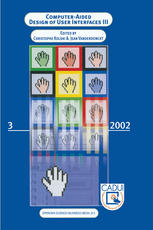

Most ebook files are in PDF format, so you can easily read them using various software such as Foxit Reader or directly on the Google Chrome browser.
Some ebook files are released by publishers in other formats such as .awz, .mobi, .epub, .fb2, etc. You may need to install specific software to read these formats on mobile/PC, such as Calibre.
Please read the tutorial at this link: https://ebookbell.com/faq
We offer FREE conversion to the popular formats you request; however, this may take some time. Therefore, right after payment, please email us, and we will try to provide the service as quickly as possible.
For some exceptional file formats or broken links (if any), please refrain from opening any disputes. Instead, email us first, and we will try to assist within a maximum of 6 hours.
EbookBell Team

4.8
94 reviewsAdvances in electronics, communications, and the fast growth of the Internet have made the use of a wide variety of computing devices an every day occurrence. These computing devices have different interaction styles, input/output techniques, modalities, characteristics, and contexts of use. Furthermore, users expect to access their data and run the same application from any of these devices. Two of the problems we encountered in our own work [2] in building VIs for different platforms were the different layout features and screen sizes associated with each platform and device. Dan Ol sen [13], Peter Johnson [9], and Stephen Brewster, et al. [4] all talk about problems in interaction due to the diversity of interactive platforms, devices, network services and applications. They also talk about the problems associ ated with the small screen size of hand-held devices. In comparison to desk top computers, hand-held devices will always suffer from a lack of screen real estate, so new metaphors of interaction have to be devised for such de vices. It is difficult to develop a multi-platform user interface (VI) without duplicating development effort. Developers now face the daunting task to build UIs that must work across multiple devices. There have been some ap proaches towards solving this problem of multi-platform VI development in cluding XWeb [14]. Building "plastic interfaces" [5,20] is one such method in which the VIs are designed to "withstand variations of context of use while preserving usability".